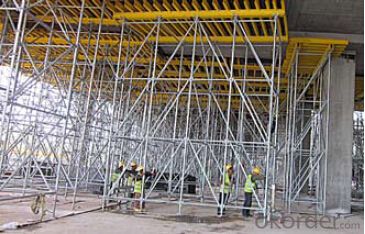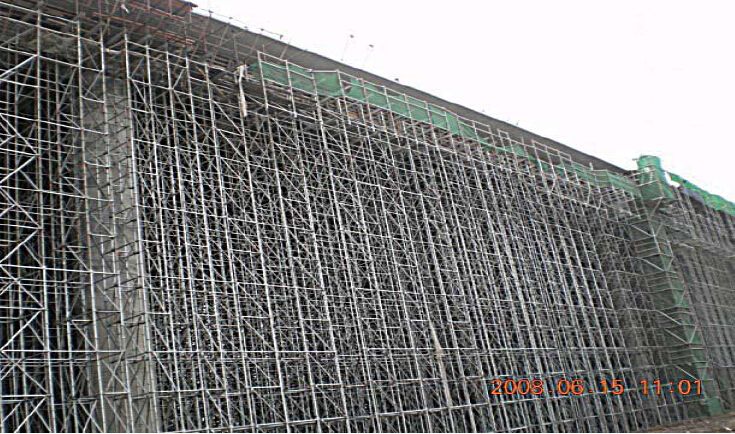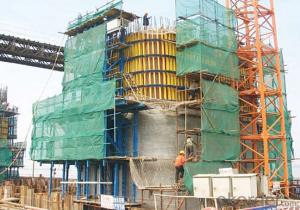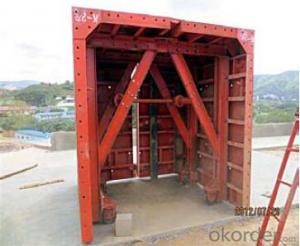Tower Scaffolding for Formwork And Scaffolding Systems
- Loading Port:
- Tianjin
- Payment Terms:
- TT OR LC
- Min Order Qty:
- 50 m²
- Supply Capability:
- 1000 m²/month
OKorder Service Pledge
Quality Product, Order Online Tracking, Timely Delivery
OKorder Financial Service
Credit Rating, Credit Services, Credit Purchasing
You Might Also Like
Tower Scaffolding
Shoring tower is an effective supporting system. It is easy to assemble and dismantlement, and
has excellent stability and bearing capacity. It has been widely used in the construction of industry
& residential buildings , bridges, tunnels and dam project, etc.
Characteristics:
◆ High degree of standardization.
◆ Easy storage and transportation
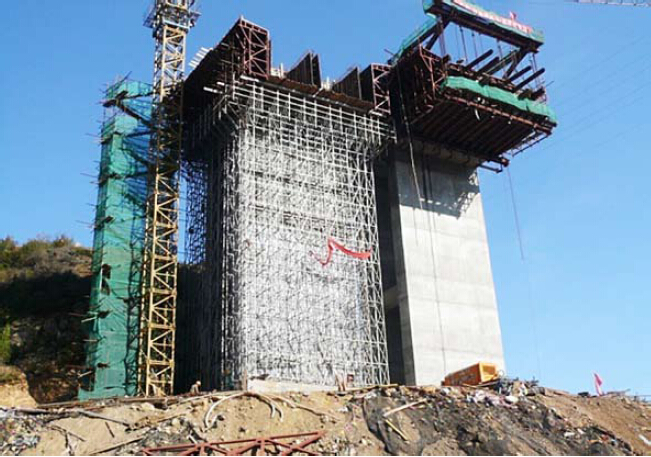
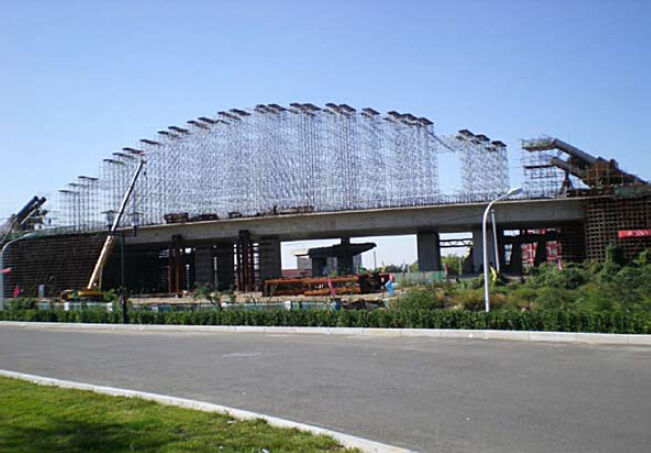
- Q: Can steel formwork be used for elevated walkways?
- Steel formwork is indeed suitable for constructing elevated walkways. It is a highly versatile and durable construction material that can be used for various applications, including the construction of elevated walkways. The strength and stability of steel formwork systems make them ideal for supporting the weight and load of a walkway. By using steel formwork for elevated walkways, one can ensure the creation of a safe and robust structure capable of withstanding heavy foot traffic and adverse weather conditions. Moreover, steel formwork allows for flexibility in design, enabling the construction of customized walkways with different shapes and sizes. In conclusion, steel formwork is a reliable choice for constructing elevated walkways due to its strength, durability, and versatility.
- Q: How does steel formwork contribute to the overall efficiency of concrete placement?
- Steel formwork contributes to the overall efficiency of concrete placement by providing a durable and reusable structure for shaping and containing the concrete during the pouring and curing process. Its strength and stability ensure accurate and precise concrete placement, reducing the risk of errors or deformities. Additionally, steel formwork allows for faster assembly and disassembly, minimizing construction time and labor costs. Its versatility enables complex shapes and designs to be achieved, enhancing the aesthetic appeal of the finished concrete structure.
- Q: How does steel formwork affect the overall safety of construction workers?
- Construction workers can greatly improve their safety by using steel formwork. The durability and strength of steel formwork make it highly resistant to damage or collapse during construction, protecting workers from potential accidents. Furthermore, steel formwork is designed to be structurally stable, providing a secure platform for workers to carry out their tasks. This stability reduces the risk of slips, trips, and falls, which are common accidents in construction sites. With a stable formwork system, workers can confidently work at heights without fear of the platform giving way. In addition, steel formwork is modular and easily assembled, allowing for quick and efficient construction processes. This reduces workers' exposure to potential hazards and risks, as they spend less time on the construction site. By shortening the project duration, steel formwork also reduces workers' fatigue and stress levels, leading to increased alertness and improved safety. Another safety advantage of steel formwork is its resistance to fire. Steel does not burn or contribute to the spread of fire, providing an extra layer of protection for construction workers in case of fire accidents on-site. This significantly reduces the risk of injuries or fatalities due to fire incidents, ensuring worker safety. Overall, the use of steel formwork in construction significantly enhances worker safety. Its durability, stability, quick assembly, and fire resistance properties all contribute to creating a safer working environment, reducing the likelihood of accidents and injuries. By investing in steel formwork, construction companies prioritize worker well-being and promote a culture of safety on the construction site.
- Q: How does steel formwork handle concrete bleeding?
- Steel formwork is an excellent choice for handling concrete bleeding. Concrete bleeding refers to the process where water in the concrete mixture rises to the surface, resulting in the separation of the water from the solid components. Steel formwork is designed to have a smooth and non-porous surface, which helps to prevent excessive bleeding and the loss of water from the concrete mixture. The tight joints and connections of steel formwork also minimize the chances of water seepage, ensuring that the concrete retains its desired water content. Additionally, steel formwork provides excellent support and stability to the concrete during the pouring and setting process. This prevents the formation of voids or gaps within the concrete, reducing the risk of excessive bleeding. The rigidity of steel formwork also helps to maintain the shape and structure of the concrete, preventing any deformation or cracking that may occur due to bleeding. Moreover, steel formwork allows for easy and efficient removal of excess water from the concrete surface. The smooth and non-absorbent nature of steel formwork facilitates the use of various techniques, such as squeegeeing or vacuuming, to remove the excess water, reducing the bleeding effect. In summary, steel formwork handles concrete bleeding effectively by providing a smooth and non-porous surface, minimizing water seepage, ensuring stability and support to the concrete, and allowing for efficient removal of excess water.
- Q: What are the factors to consider when selecting steel formwork for a project?
- When selecting steel formwork for a project, several factors need to be considered. These include the project requirements, such as the desired finish and structural integrity, as well as the budget and timeline. Other factors to consider include the complexity of the project, the availability of skilled labor, and the reusability of the formwork. Additionally, the durability and maintenance requirements of the steel formwork should be evaluated to ensure its long-term viability.
- Q: What type of concrete finishes can be achieved with steel formwork?
- Steel formwork allows for a wide range of concrete finishes to be achieved. One of the most common finishes is a smooth and flat surface, which is achieved by using steel formwork that has a smooth texture. This finish is ideal for areas that require a level and even surface, such as floors and walls. Another type of finish that can be achieved with steel formwork is a textured or patterned surface. This can be achieved by using steel formwork that has a textured or patterned surface itself, or by using additional materials such as rubber or plastic liners that create the desired texture or pattern. This finish is often used for decorative purposes, such as in architectural concrete elements or for exposed aggregate finishes. In addition to the above, steel formwork can also be used to create curved or shaped concrete surfaces. This is achieved by bending or shaping the steel formwork to the desired shape before pouring the concrete. This type of finish is commonly used in architectural or artistic applications, where unique and aesthetically pleasing shapes are desired. Overall, steel formwork provides a versatile option for achieving a wide range of concrete finishes, including smooth, textured, patterned, and curved surfaces. The choice of finish depends on the specific requirements and desired aesthetics of the project.
- Q: What are the different types of edge protections available for steel formwork?
- Different types of edge protections are available for steel formwork, each designed for a specific purpose and offering varying levels of safety and functionality. Here are some common types: 1. Steel edge protection: Constructed from steel, this type is typically used in heavy-duty construction projects. It ensures the safety of workers and prevents accidental falls with its excellent durability and strength. 2. Rubber edge protection: Offering impact resistance and a cushioning effect, rubber edge protection is a lightweight and flexible option. It is commonly used in areas where workers may come into contact with the edge, such as staircases or walkways. 3. Plastic edge protection: Lightweight, easy to install, and cost-effective, plastic edge protection creates a barrier between workers and the edge, preventing slips or falls. It is commonly used in low-risk areas or temporary construction sites. 4. Foam edge protection: Made of soft and flexible material, foam edge protection provides a cushioning effect and prevents injuries from accidental bumps. It is typically used in areas with a lower risk of falls but a higher chance of impact. 5. Metal edge protection: Industrial settings with heavy machinery or equipment often utilize metal edge protection. It offers excellent durability and protection against impact, ensuring the safety of both workers and equipment. 6. Removable edge protection: This type can be easily installed and removed as needed. It is commonly used in areas requiring temporary edge protection, such as during construction or renovation projects. It is crucial to select the appropriate edge protection based on the specific requirements of the construction project, considering factors like risk level, durability, ease of installation, and cost-effectiveness.
- Q: What are the different types of connections used in steel formwork systems?
- There are several types of connections used in steel formwork systems, each serving a specific purpose. The most common types of connections are as follows: 1. Bolted Connections: This type of connection involves using bolts to join different components of the steel formwork system. Bolted connections are strong and rigid, providing stability and ensuring that the formwork remains intact during the concrete pouring process. 2. Welded Connections: Welding is another commonly used method for connecting steel formwork components. Welded connections offer excellent strength and durability, and they can withstand heavy loads and vibrations. Welding also allows for a seamless connection, reducing the risk of leakage or seepage of concrete. 3. Pin Connections: Pin connections involve using steel pins to connect different formwork components. These pins are inserted into pre-drilled holes and secured with nuts or other fasteners. Pin connections are relatively easy to assemble and disassemble, making them suitable for temporary formwork systems. 4. Clamped Connections: Clamped connections utilize clamps or couplers to connect various steel formwork elements. Clamps are typically tightened with bolts or screws to provide a secure connection. This type of connection is often used in systems where quick assembly and disassembly are required. 5. Interlocking Connections: Interlocking connections involve using interlocking mechanisms or slots to connect different formwork components. These connections are designed to fit together seamlessly, providing stability and preventing any movement or displacement during the concrete pouring process. Interlocking connections are often used in modular formwork systems. Each type of connection has its advantages and disadvantages, and the choice of connection method depends on factors such as the formwork system design, load requirements, assembly/disassembly speed, and project specifications. It is crucial to select the appropriate connection type to ensure the safety and efficiency of the steel formwork system.
- Q: How does steel formwork compare to wooden formwork?
- Due to its numerous advantages, steel formwork is often considered superior to wooden formwork. Firstly, steel formwork is highly durable and can withstand heavy loads and repeated use, unlike wooden formwork which warps, cracks, or splits. As a result, it has a longer lifespan and reduced maintenance costs. Furthermore, steel formwork ensures greater accuracy and precision in construction. Its rigid structure maintains the desired dimensions and shapes, resulting in better-quality finishes. Conversely, wooden formwork can be challenging to align, potentially causing slight variations or imperfections in the final product. In addition, steel formwork offers increased efficiency and productivity. It can be easily assembled, disassembled, and relocated, reducing construction time and labor costs. Moreover, steel formwork requires minimal cleaning and maintenance, eliminating the constant need for repairs or replacements associated with wooden formwork. Moreover, steel formwork is more resistant to moisture and weather conditions. It does not absorb water or warp when exposed to rain or humidity, making it suitable for various climates. Conversely, wooden formwork can degrade when exposed to moisture, potentially compromising the structural integrity of the construction. Although the initial investment in steel formwork may be higher than that of wooden formwork, its long-term benefits outweigh the costs. It provides greater durability, accuracy, efficiency, and resistance to environmental factors, making it the preferred choice in modern construction projects.
- Q: What are the different types of form release agents used with steel formwork?
- There are several types of form release agents used with steel formwork, including petroleum-based, water-based, and emulsion release agents. Petroleum-based release agents are commonly used and provide good release properties, but they may have environmental concerns. Water-based release agents are environmentally friendly and provide a good release, but they may require additional drying time. Emulsion release agents are a combination of oil and water and offer a balance between petroleum-based and water-based agents. The choice of form release agent depends on factors such as the desired release properties, environmental considerations, and specific project requirements.
Send your message to us
Tower Scaffolding for Formwork And Scaffolding Systems
- Loading Port:
- Tianjin
- Payment Terms:
- TT OR LC
- Min Order Qty:
- 50 m²
- Supply Capability:
- 1000 m²/month
OKorder Service Pledge
Quality Product, Order Online Tracking, Timely Delivery
OKorder Financial Service
Credit Rating, Credit Services, Credit Purchasing
Similar products
Hot products
Hot Searches
Related keywords


